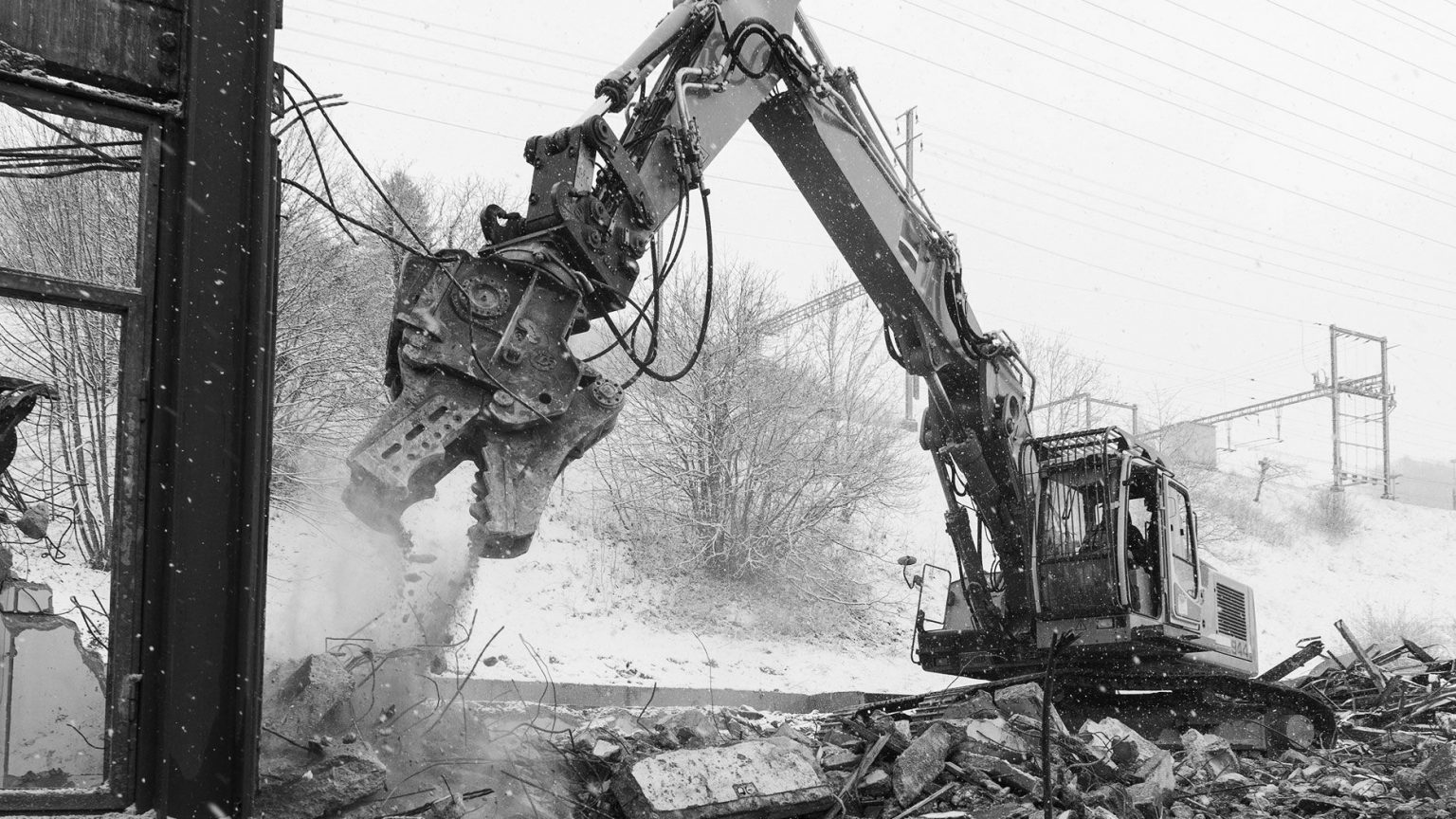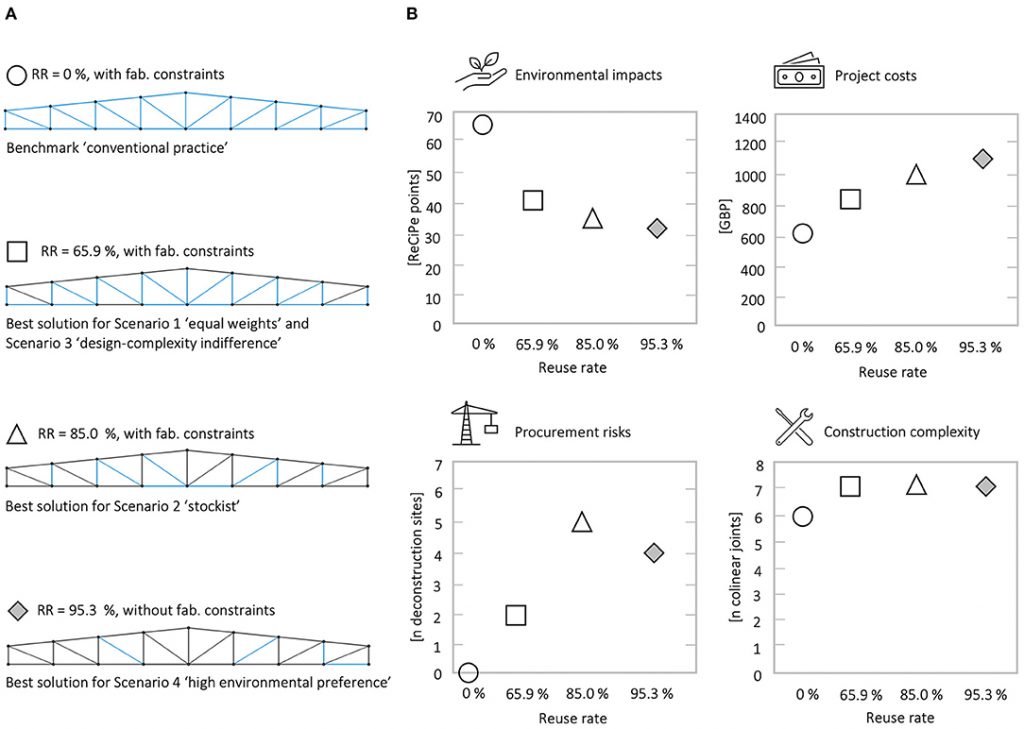environmental indicators
Buildings represent over a third of global anthropogenic greenhouses emissions. Load-bearing elements are the biggest contributor to the embodied carbon of buildings. New pathways for its reduction are to be found in order to avoid extreme climate catastrophes. However, the task of designing buildings remains very complex and environmental measures often contradict each other. How good is a new design? Is it actually better and more appropriate than previous ones? How can we objectively assess the environmental benefits gained when reusing load-bearing components over multiple life-cycles?

mapping Geneva’s embodied carbon legacy
Decisions on future developments too often result from no to little understanding of the historical development that has led to that current situation. Understanding the past to better shape the future is a known adage that is however harder and harder to apply because of data proliferation. Any synthetic, user-friendly, representation of the past is therefore key to its interpretation. Compared to other productions of the humankind, the built environment has a particular grip on space and time: built artefacts have a long service life and they shape the spatial context of human activities in many ways. As of today, little is available when it comes to assess the embodied carbon related to urban developments. We here apply a new, bottom-up methodology, to assess the embodied carbon over time and space, in the limits of the canton of Geneva. This project is carried within the Habitat Research Center and contributes to the DHLab Time Machine.
Publication under review.
- Corentin Fivet
- Catherine De Wolf
- Thibaut Menny
- Serena Vanbutsele
Please note that the publication lists from Infoscience integrated into the EPFL website, lab or people pages are frozen following the launch of the new version of platform. The owners of these pages are invited to recreate their publication list from Infoscience. For any assistance, please consult the Infoscience help or contact support.
Decision Framework to Balance Environmental, Technical, Logistical, and Economic Criteria When Designing Structures With Reused Components
The reuse of structural components in new buildings has great potential to reduce the environmental impacts of the construction sector but remains uncommon practice. An obstacle to its wider implementation is the lack of robust assessment methods and decision-making tools that consider the full spectrum of benefits and drawbacks. This paper proposes a multi-criteria decision framework that builds on a simulated set of design alternatives with varying ratios of reused and new structural components. A set of performance criteria is presented, addressing procurement risks, construction technique complexity, environmental impacts, and project costs. As the independent criterion evaluations often deliver conflicting results, a multi-criteria decision analysis helps identify the most appropriate solution. The design of a steel Pratt truss is used as a case study to demonstrate the applicability of the framework. Different alternatives with reuse rates above 65% are recommended for each preference scenario, reducing between 35 and 45% of adverse environmental impacts in comparison to an equivalent design made of new elements only. The study underpins the principle that there is no trivial and unique best option when designing with reused components. Multi-criteria decision analyses applied to structures with varying reuse rates constitute a promising tool to support decision-makers.
Frontiers in Sustainability
2021
Vol. 2 , p. 689877.DOI : 10.3389/frsus.2021.689877

Please note that the publication lists from Infoscience integrated into the EPFL website, lab or people pages are frozen following the launch of the new version of platform. The owners of these pages are invited to recreate their publication list from Infoscience. For any assistance, please consult the Infoscience help or contact support.
Comparison of environmental assessment methods when reusing building components: a case study
The building industry is responsible for 35% of all solid waste in Europe and more than a third of greenhouse gas (GHG) emissions. To address this, applying circular economy principles to the building sector is crucial, for example by reusing building elements from demolition sites rather than extracting and producing new materials. However, most current life-cycle assessment (LCA) tools are not appropriate to evaluate the environmental impact of a building when its components originate from prior buildings and/or will be used in future unknown ones. Still, robust measurement is needed to demonstrate the benefits of reuse towards environmentally sustainable cities. This paper compares existing methodologies to quantify the global warming potential (GWP, expressed in kgCO2e/unit) of recycled/recyclable and reused/reusable products, selected within widely recognised standards, rating schemes, and academic studies, such as the cut-off method, the end-of-life method, the distributed allocation (PAS-2050) method, the Environmental Footprint method, the Degressive method and the SIA 2032 method. Based on these recognised approaches for assessing the GWP of products, new equations are written and applied to buildings with reused/reusable materials for each of the methods. The Kopfbau Halle 118 building (Winterthur, CH, 2021), which is designed with reclaimed elements from local demolition sites, is chosen as a case study. Discrepancies in LCA methods are highlighted by applying them to three different life cycles corresponding to the first, intermediate, or final use of building components. This paper shows that current quantification methods to assess reuse give wide-ranging results and do not address the full spectrum of the reuse practice, that their boundaries are too limited, and that a number of critical features are currently hardly quantifiable, such as embedded use value, versatility, storage and transformation impacts, user-owner separation, dis/re-mountability, or design complexity.
Sustainable Cities and Society
2020
Vol. 61 , p. 102322.DOI : 10.1016/j.scs.2020.102322

Other publications:
- Database of Embodied Quantity Outputs: Lowering Material Impacts Through Engineering
Journal of Architectural Engineering 2020 (detailed record) - Embodied Carbon Benefits of Reusing Structural Components in the Built Environment: a Medium-rise Office Building Case Study
PLEA conference 2018 (detailed record) - Environmental Benefits when Reusing Load-Bearing Components in Office Buildings: A Case Study.
PLEA conference 2018 (detailed record) - Can timber lower the environmental impact of tall buildings?
ICSA conference 2019 (detailed record)